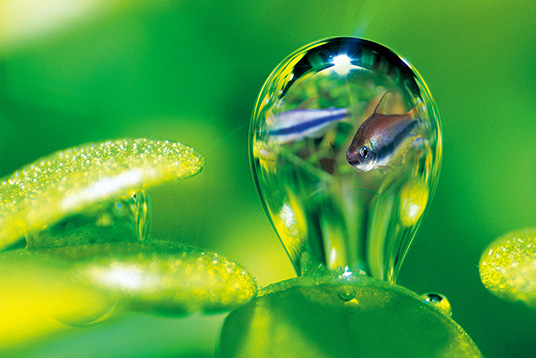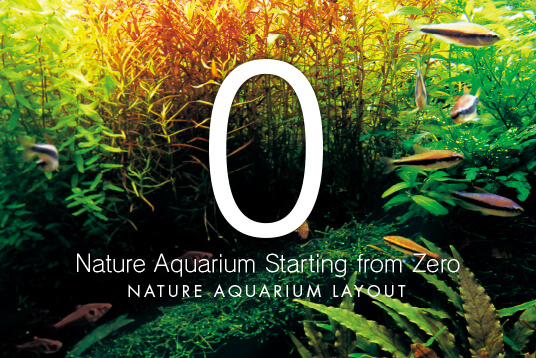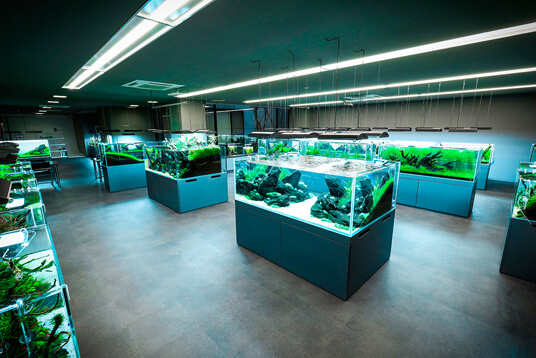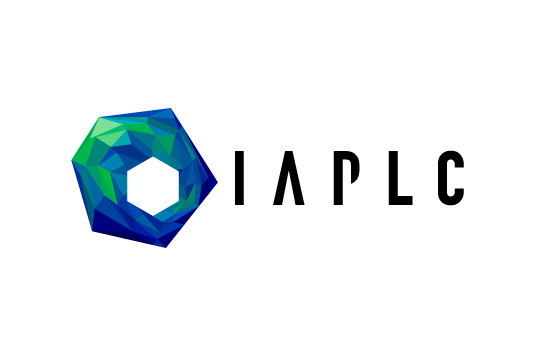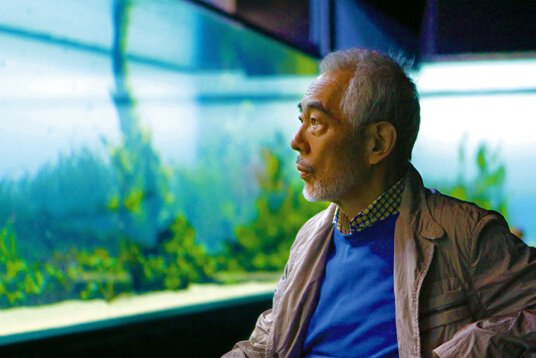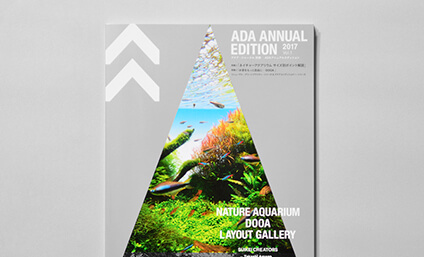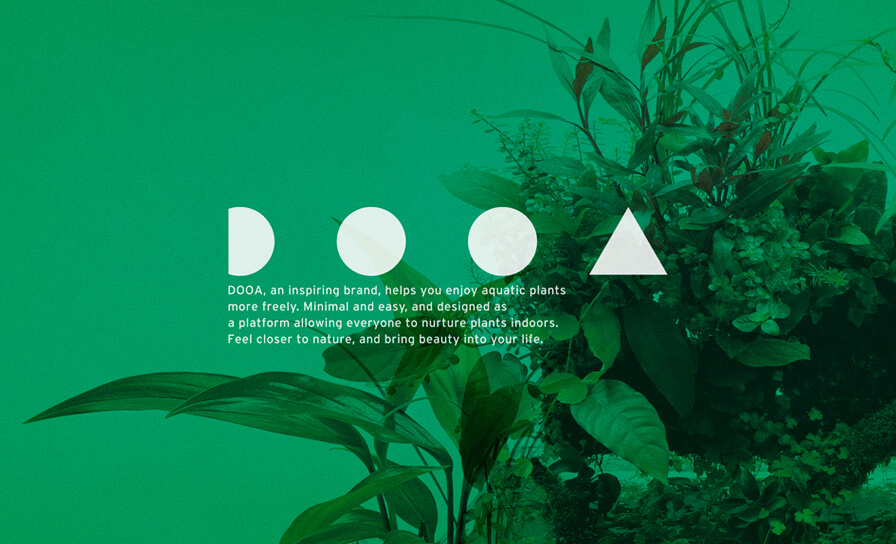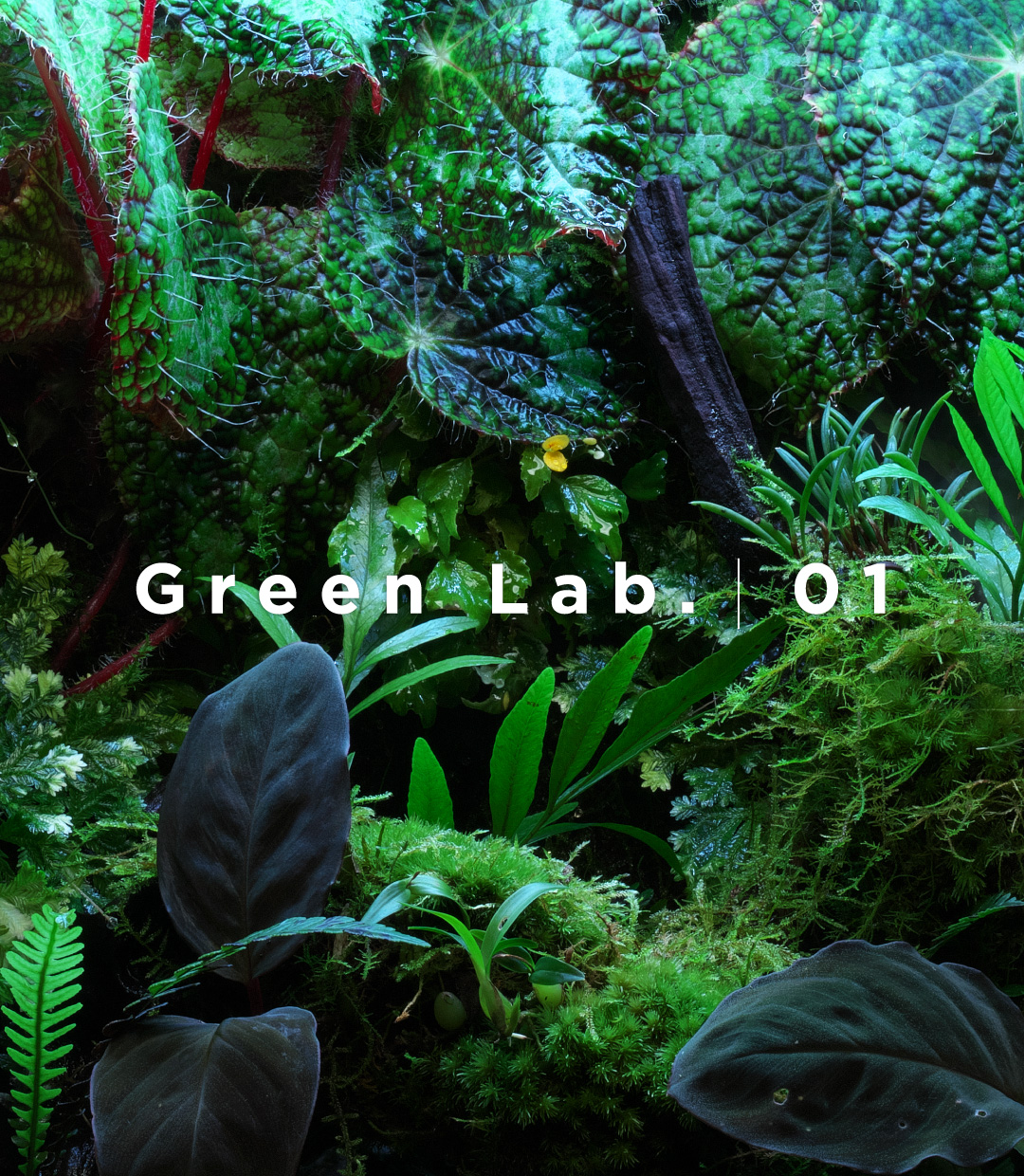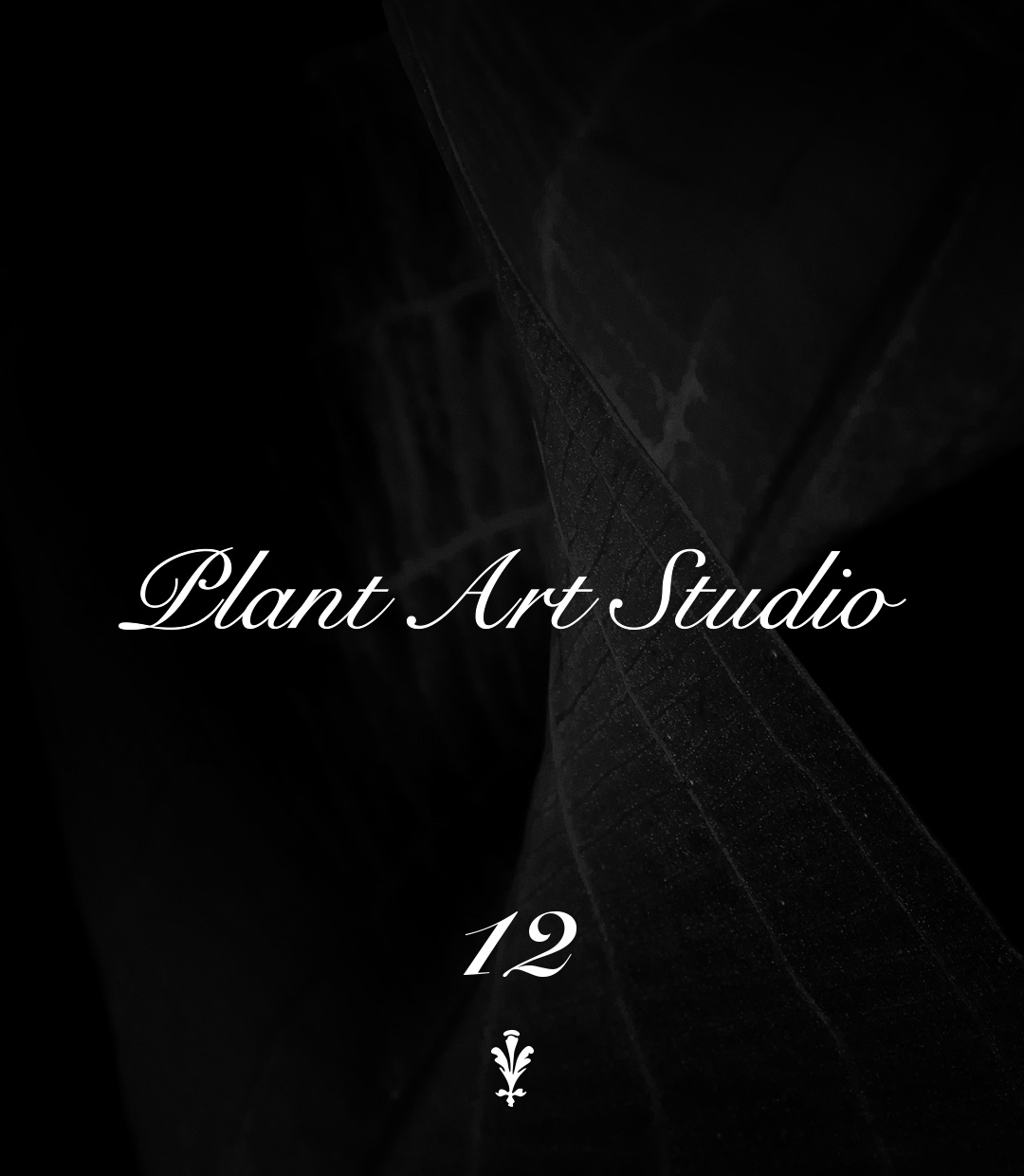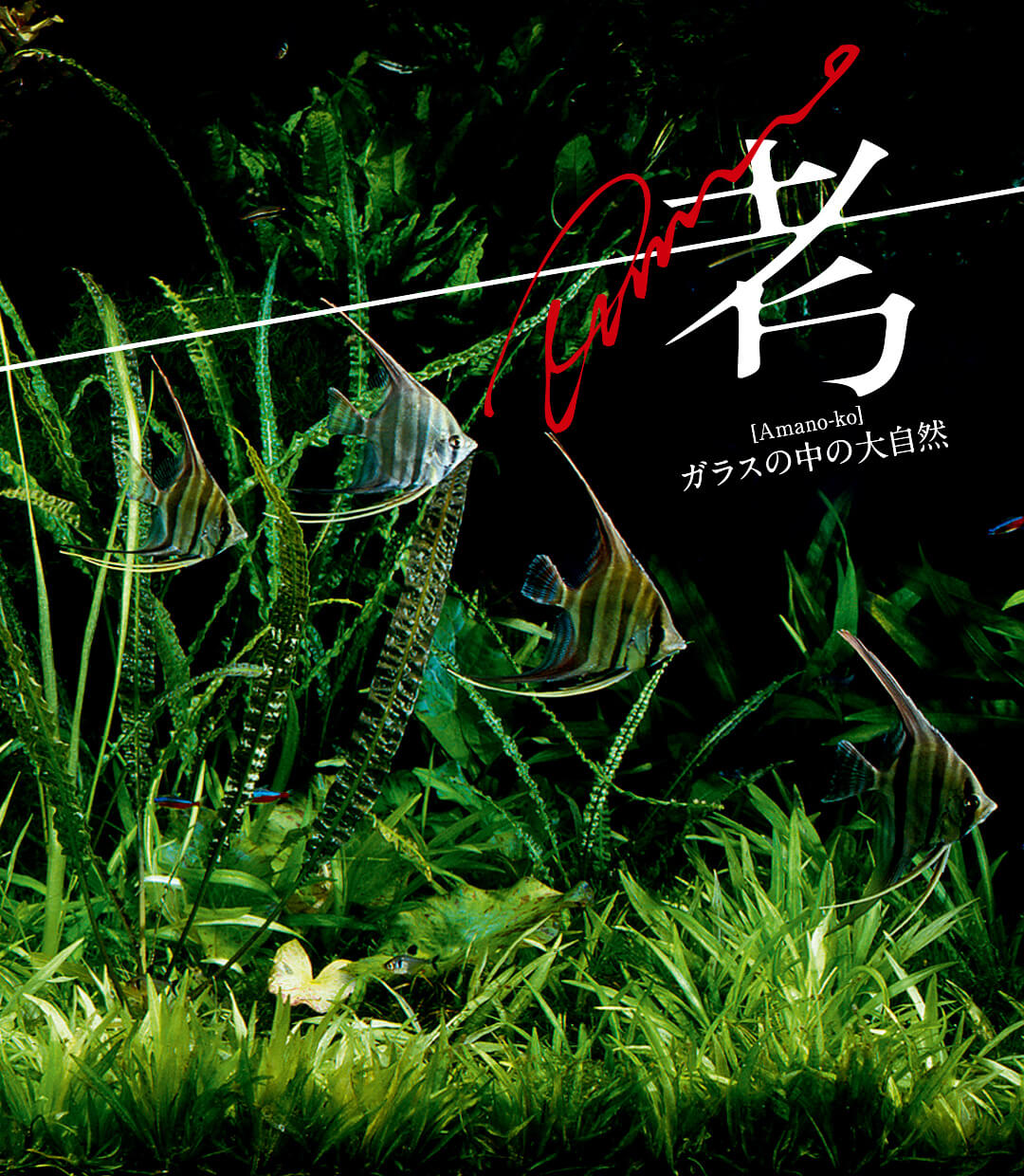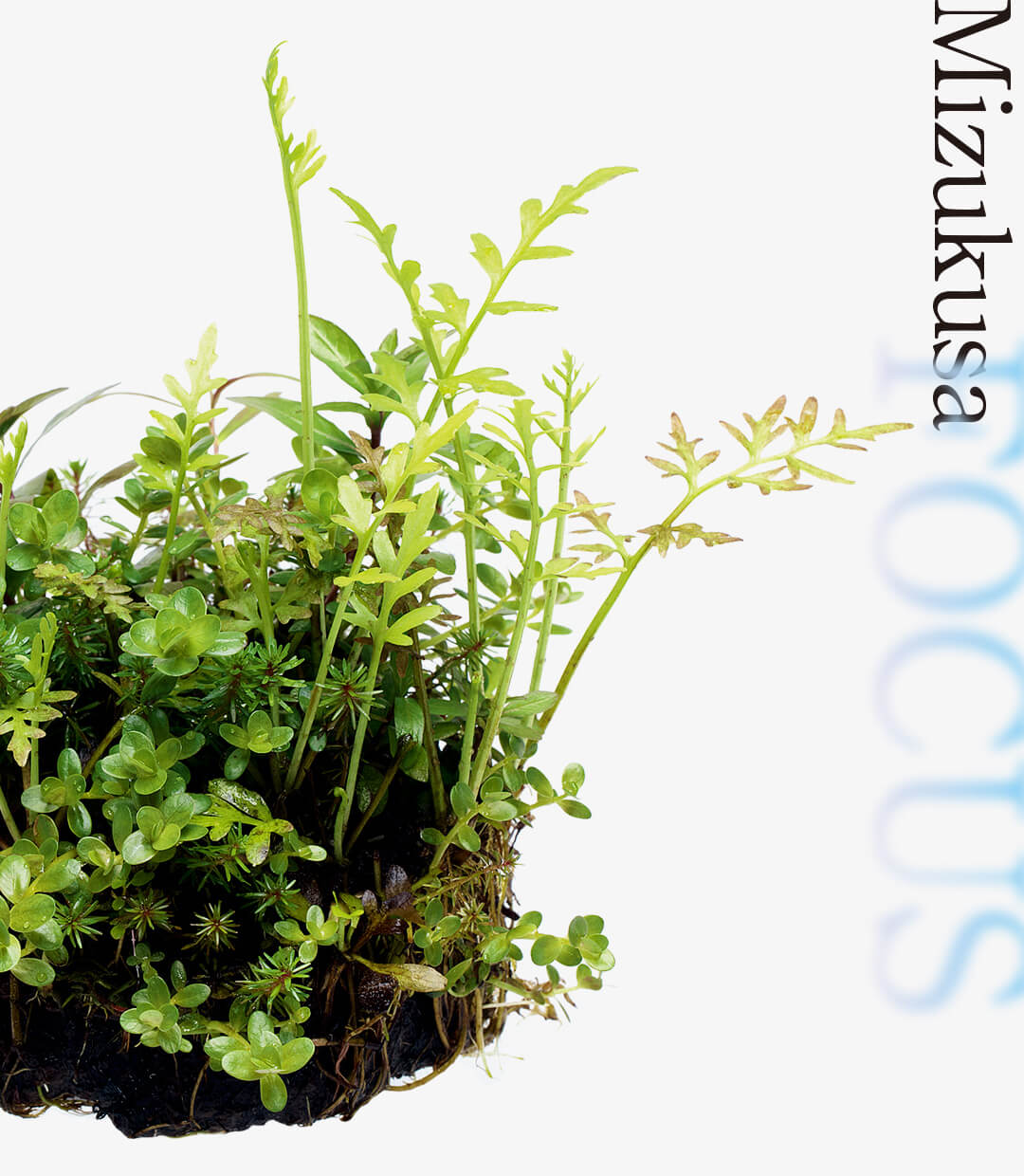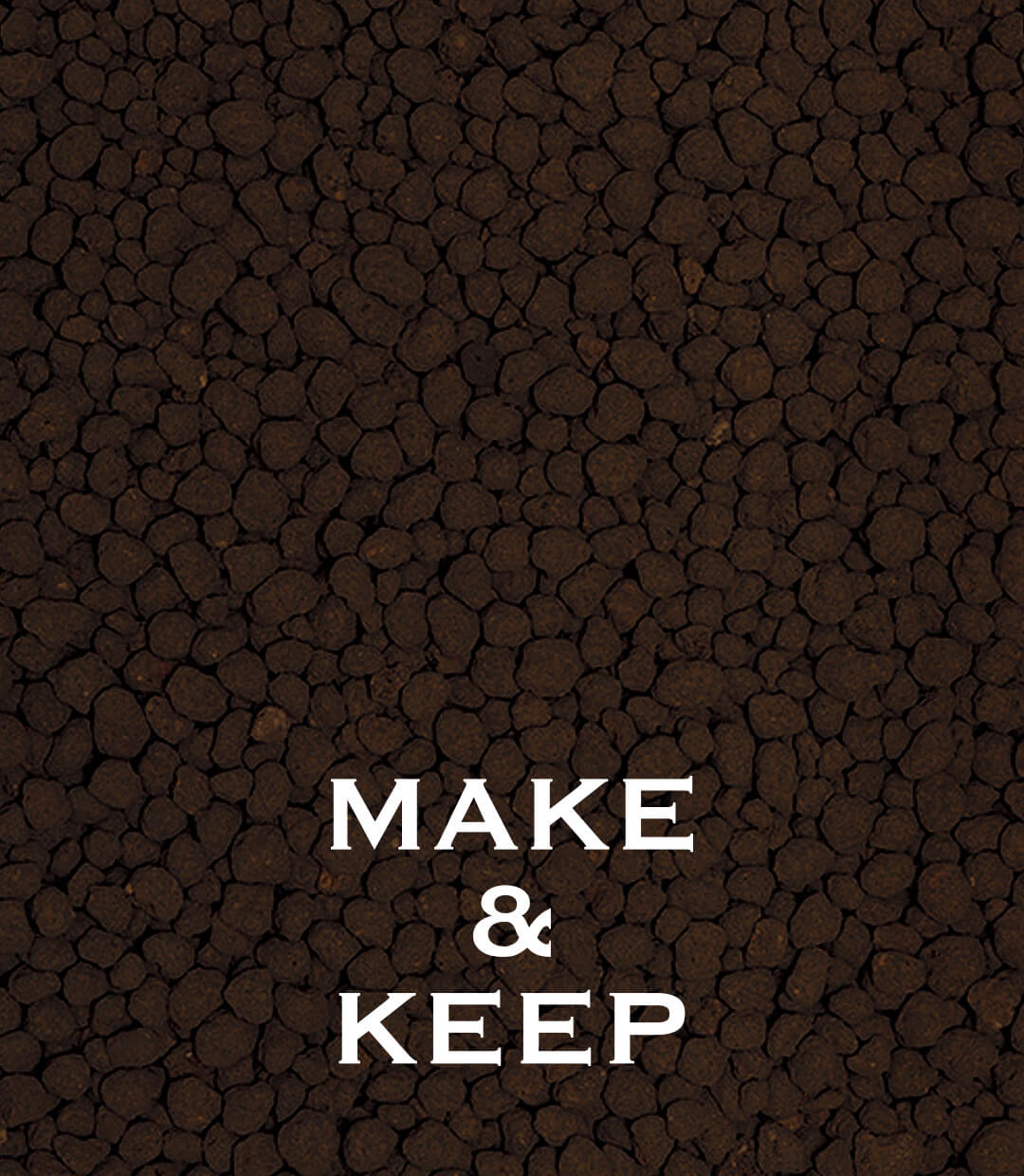2024.07.05
CREATOR WORKS : Healing Bush

Attempting to create an aboriginal-art-like expression, Naru Uchida attached Hyg. Pinnatifida across a simple compositional framework with thriving stem plants in the background. As he intended, various aquatic plant types appear to fill the tank with a mix of colors.

Photographed on January 30, 2023

Photographed on March 29, 2023
DATA
Made on: January 30, 2023
Photo taken on: March 29, 2023
Creator: Naru Uchida (ADA SUIKEI CREATOR)
Aquarium: Cube Garden W1,200×D500×H500 (mm)
Lighting: Solar RGB *2(8.5 hours per day)
Filtration: Super Jet Filter ES-1200 (Bio Rio G)
Material: Yamaya stone, Horn wood
Substrate: Aqua Soil – Amazonia Ver.2, Power Sand Advance M, Bactor 100, Clear Su-per, Tourmaline BC
CO2: Pollen Glass Beetle 40Ø, 5 bubbles per second via Co2 Beetle Counter using Tower
Aeration: 15.5 hours after the light is turned off using Lily Pipe P-6
Additives: Brighty K, Green Brighty Mineral, Green Brighty Iron, Green Brighty Ni-trogen
Water change: 1/3 once a week
Water quality: Temperature 25℃, pH:6.4, TH:50mg/L
Plants
Rotala rotundifolia sp. ‘Hra’
Rotala rotundifolia ‘Fujian’
Rotala rotundifolia sp. ‘Reddish’
Rotala rotundifolia sp. ‘Flower’
Rotala rotundifolia ‘Green’
Rotala rotundifolia ‘Ceylon’
Hygrophila polysperma
Hygrophila pinnatifida
Ludwigia ‘Eeltricolor’
Ludwigia ‘Super Red’
Ludwigia brevipes
Ludwigia glandulosa
Ludwigia arcuata
Ammannia pedicellata
Pogostemon deccanensis
Limnophila hippuridoides
Alternanthera reineckii ‘Lilacina’
Bacopa caroliniana
Micranthemum glomeratum
Staurogyne repens
Eleocharis parvula
Hydrocotyle verticillate
Glossostigma elatinoides
Taxiphyllum barbieri
Fish
Melanotaenia kamaka
Melanotaenia sahulensis
Chilatherina sentabiensis
Crossocheilus oblongus
Otocinclus sp.
Caridina multidentata
Made on: January 30, 2023
Photo taken on: March 29, 2023
Creator: Naru Uchida (ADA SUIKEI CREATOR)
Aquarium: Cube Garden W1,200×D500×H500 (mm)
Lighting: Solar RGB *2(8.5 hours per day)
Filtration: Super Jet Filter ES-1200 (Bio Rio G)
Material: Yamaya stone, Horn wood
Substrate: Aqua Soil – Amazonia Ver.2, Power Sand Advance M, Bactor 100, Clear Su-per, Tourmaline BC
CO2: Pollen Glass Beetle 40Ø, 5 bubbles per second via Co2 Beetle Counter using Tower
Aeration: 15.5 hours after the light is turned off using Lily Pipe P-6
Additives: Brighty K, Green Brighty Mineral, Green Brighty Iron, Green Brighty Ni-trogen
Water change: 1/3 once a week
Water quality: Temperature 25℃, pH:6.4, TH:50mg/L
Plants
Rotala rotundifolia sp. ‘Hra’
Rotala rotundifolia ‘Fujian’
Rotala rotundifolia sp. ‘Reddish’
Rotala rotundifolia sp. ‘Flower’
Rotala rotundifolia ‘Green’
Rotala rotundifolia ‘Ceylon’
Hygrophila polysperma
Hygrophila pinnatifida
Ludwigia ‘Eeltricolor’
Ludwigia ‘Super Red’
Ludwigia brevipes
Ludwigia glandulosa
Ludwigia arcuata
Ammannia pedicellata
Pogostemon deccanensis
Limnophila hippuridoides
Alternanthera reineckii ‘Lilacina’
Bacopa caroliniana
Micranthemum glomeratum
Staurogyne repens
Eleocharis parvula
Hydrocotyle verticillate
Glossostigma elatinoides
Taxiphyllum barbieri
Fish
Melanotaenia kamaka
Melanotaenia sahulensis
Chilatherina sentabiensis
Crossocheilus oblongus
Otocinclus sp.
Caridina multidentata

SUIKEI CREATOR INTERVIEW
Naru Uchida
Aquascape expression inspired by Aboriginal art
--- We’ve heard this aquascape creation was inspired by your recent trip to Australia. Can you tell us more?
During a private trip to Australia in 2022, I had an opportunity to visit the Central Desert. Rocks like Uluru, the world’s biggest monolith, and Kata Tjuta, are located there. The dry, red expanse with these gigantic rock formations is said to be the navel of the earth. It is a desert, so I had imagined it being dry and desolate, but when I actually got there I saw a world of blooming plantlife, within which I could observe all sorts of animals. This is the aquascape creation that started with, in a somewhat playful mind, me wondering whether I could not shape that world I saw into a Nature Aquarium.
--- How did you express your impression to the nature of Australia in the aquascape?
In Australia, part of the creative process of the art of indigenous peoples (Aboriginals), which is known as Aboriginal art, is the incorporation of natural elements (information). For example, information about things like where kangaroos live, where water sources are, or where to keep out of the rain, concealed in a picture. When we see it, it might just look like a painting but to Aboriginal peoples it is a map, a picture packed with information essential to their lives. I thought the process of putting essences from nature into pictures is kind of similar to what we do to make Nature Aquarium. And isn’t it funny to get inspired from a desert to make an aquascape?
---Sounds like you’ve got a special fondness for Australia.
That’s right. My aunt actually does something related to Aboriginal art for work. When I was a kid, one of the artists she was working with visited us in Ibaraki and painted a picture right in front of me. I still have the art hung on my wall. Back then I found it mysterious that someone living in a desert draws such a colorful picture. But when I saw the desert for real it made sense. Even in the desert, it rains heavily. There are rivers and lakes, and lush vegetation. When I actually saw that scenery with my own eyes, I had this strange feeling that I had solved the mystery of the Aboriginal painting I have been looking at since my childhood. A feeling that we have this commonality- of taking an essence or motif from nature and, with human energy, breathing it into a canvas or aquarium tank- filled me with desire to take on new challenges as a Suikei creator.
---How does taking inspiration from other kinds of art affect your aquascape making process?
I’m not saying it’s bad, but creating aquascapes that are influenced by amazing aquascapes alone can get dull. At least for me. You might end up with a great layout, but it doesn’t go beyond that. But an aquascape which skillfully incorporates your past experience, as well as your inner feelings, will result in a worldview which only you can express. The inspiration might come from having been moved by a painting or tasting some great food or hearing some touching music. Of course your experiences in nature are most easily linked to your layout expression but I think being exposed to other art genres can be a positive stimulus. You can start anything by imitation and get good at it with experience, but after that is where it gets difficult. Recently I have been asking myself whether a work’s value lies not in whether it is an expression of oneself but in whether it is an expression of human nature.
---Looking at works by ADA Suikei creators, I often feel that humanity, or individuality, is apparent in their creations.
Yes. I feel that for us as ADA Suikei creators, artistic elements are essential to our aquascapes. Also, as there are five of us now, each one’s individuality is also necessary for any sense of authorship. For that there is also the challenge of establishing a creative process unique to oneself, like drawing on the essence of Aboriginal art was for me, something I would like to pursue further.
---Moving on to your layout composition, we can’t see much of the structural outline. Did you mean to do that?
Because I was aiming to leave the expression of the life force and vitality of aquatic plants up to the aquatic plants themselves, I made the composition as simple as possible so that the plants would eventually fill the whole aquarium.

Photographed on January 30, 2023
---Amongst the aquatic plants, the Hyg. Pinnatifida gives a strong impression. I wonder how you arranged it on the driftwood. Was it intentional?
Using three straight pieces of Horn Wood, each slightly angled and spread out over a wide area to the left and right, I put the structure together whilst imagining epiphytic plants growing thickly all over it. It was difficult to keep the plant growth uniform whilst keeping artificiality to a minimum, I had to carefully consider the characteristics and growth direction of the epiphytes at the compositional, framework-building stage. Planting Hyg. Pinnatifida within this changed the whole atmosphere. I made the framework as simple and stable as possible for ease of long-term maintenance. Otherwise the first six months may be perfect but the aquascape will then start falling apart. When I create I like to start by imagining a stable structure and how the plants growing on it will look in the future.
---Please tell us about the colors of the midground to background and their balance.
It is normal to keep stemmed plants neatly separated when planting, but here I was intentionally trying to mix them. The reason being, I didn’t want the piece, when viewed as a whole, to take on any specific color. Like a paint pallet in the middle of which all sorts of colors have mixed together. With repeated trimming, all the aquatic plants will naturally mix together. To achieve that feeling of unspecified-color, I used about ten different types of stemmed plant, dotting them here and there so as to make it difficult to discern the impression of any individual type. With each trim the mix of colors changed, in interesting and unexpected ways through which I could feel the power of aquatic plants. In this impression I could feel an air of the world of abstract Aboriginal art which I had been aiming for.
Using three straight pieces of Horn Wood, each slightly angled and spread out over a wide area to the left and right, I put the structure together whilst imagining epiphytic plants growing thickly all over it. It was difficult to keep the plant growth uniform whilst keeping artificiality to a minimum, I had to carefully consider the characteristics and growth direction of the epiphytes at the compositional, framework-building stage. Planting Hyg. Pinnatifida within this changed the whole atmosphere. I made the framework as simple and stable as possible for ease of long-term maintenance. Otherwise the first six months may be perfect but the aquascape will then start falling apart. When I create I like to start by imagining a stable structure and how the plants growing on it will look in the future.
---Please tell us about the colors of the midground to background and their balance.
It is normal to keep stemmed plants neatly separated when planting, but here I was intentionally trying to mix them. The reason being, I didn’t want the piece, when viewed as a whole, to take on any specific color. Like a paint pallet in the middle of which all sorts of colors have mixed together. With repeated trimming, all the aquatic plants will naturally mix together. To achieve that feeling of unspecified-color, I used about ten different types of stemmed plant, dotting them here and there so as to make it difficult to discern the impression of any individual type. With each trim the mix of colors changed, in interesting and unexpected ways through which I could feel the power of aquatic plants. In this impression I could feel an air of the world of abstract Aboriginal art which I had been aiming for.


---In terms of maintenance, were there difficulties?
Trimming was definitely one. For this aquascape, instead of cutting along trimming lines I had to change my cutting method depending on the type or state of aquatic plant, and in the case of Ludwigia and Bacopa caroliniana perform a plucking-like cut of apical buds. This was to ensure a relatively even and harmonized overall balance of the various types of stemmed plants. But as the mix of stemmed plants and that overall balance, rather than being clearly defined, largely came down to my own sense, communicating that management to caretaking staff was quite challenging. And I could not exactly put my finger on which stage the plants were ready for a photoshoot, but anyway I thought I should try not to predict how it might become. When managing an aquascape, algae outbreaks, water clouding and other such unexpected negative occurrences may arise, but exciting positive ones too, like the unexpected ways the plants grow. The way the plants grew in this aquascape was beyond my expectations, and made it one of my fondest works. To achieve highly original expressions in the future, I want to work hard on Suikei creations which incorporate my own worldview.
Trimming was definitely one. For this aquascape, instead of cutting along trimming lines I had to change my cutting method depending on the type or state of aquatic plant, and in the case of Ludwigia and Bacopa caroliniana perform a plucking-like cut of apical buds. This was to ensure a relatively even and harmonized overall balance of the various types of stemmed plants. But as the mix of stemmed plants and that overall balance, rather than being clearly defined, largely came down to my own sense, communicating that management to caretaking staff was quite challenging. And I could not exactly put my finger on which stage the plants were ready for a photoshoot, but anyway I thought I should try not to predict how it might become. When managing an aquascape, algae outbreaks, water clouding and other such unexpected negative occurrences may arise, but exciting positive ones too, like the unexpected ways the plants grow. The way the plants grew in this aquascape was beyond my expectations, and made it one of my fondest works. To achieve highly original expressions in the future, I want to work hard on Suikei creations which incorporate my own worldview.
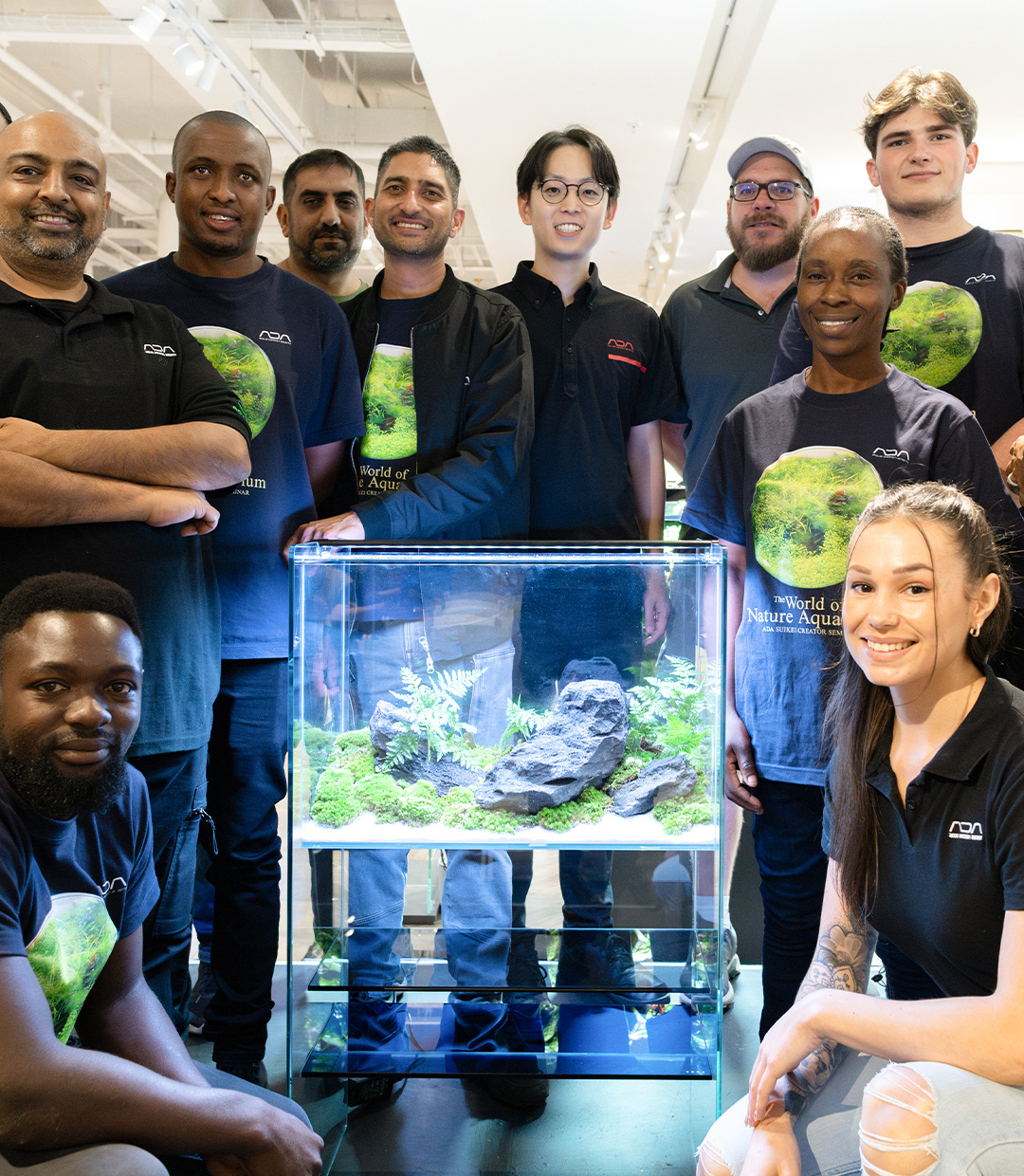
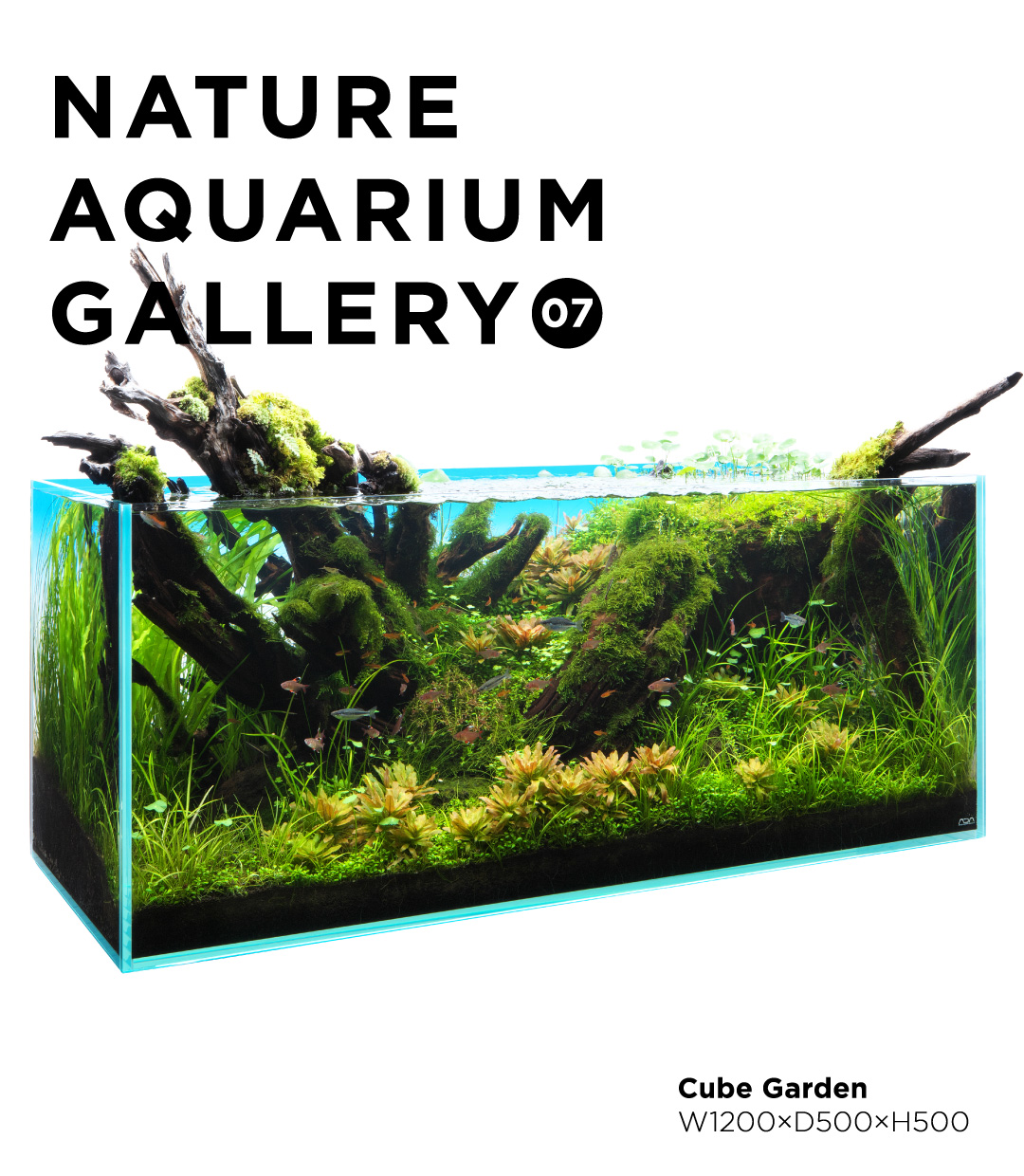
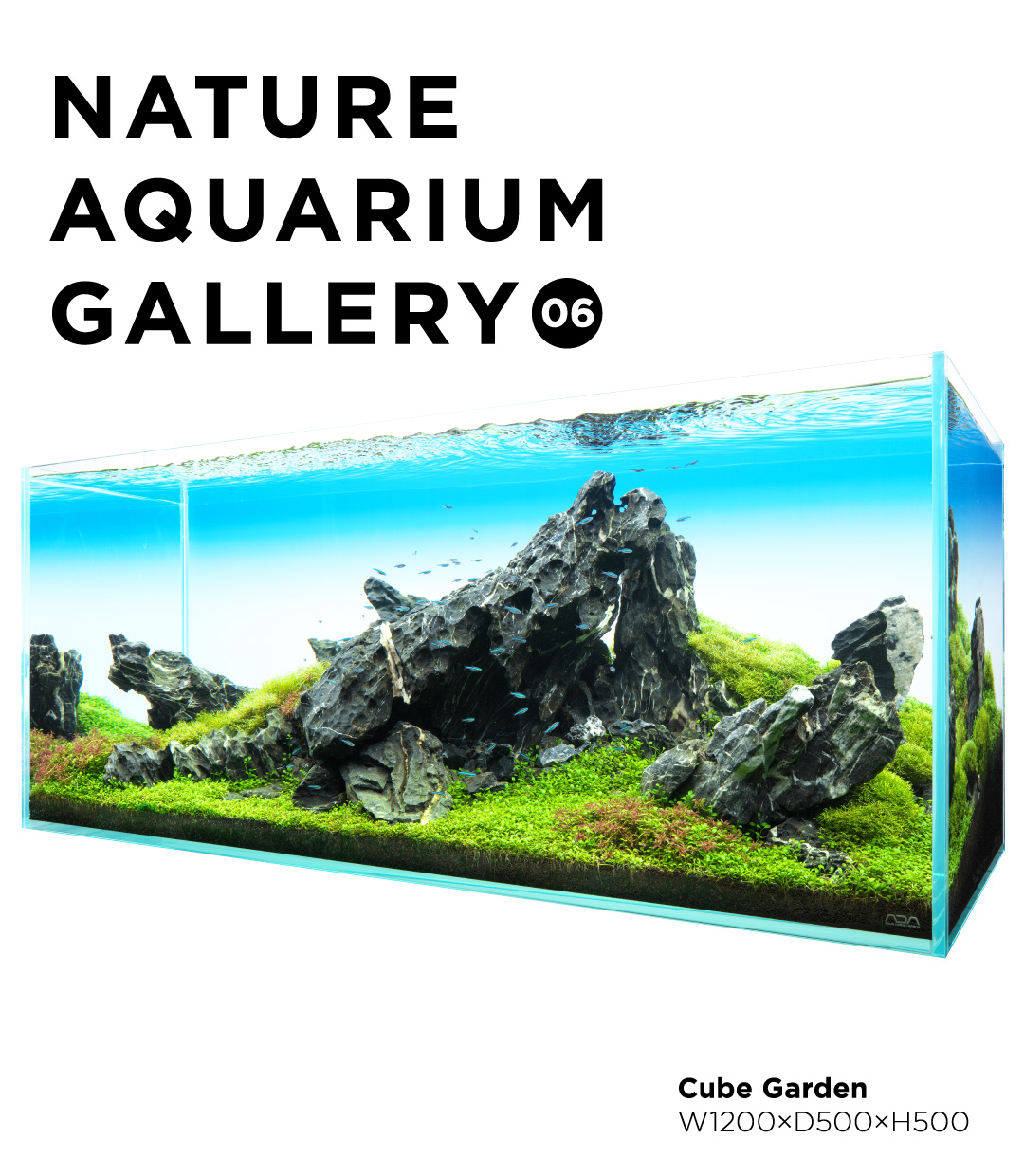
![Green Lab. #06 [ A Restful Waterside ]](https://www.adana.co.jp/wp-content/uploads/sites/3/2025/11/gl06_img_ogp.jpg)
